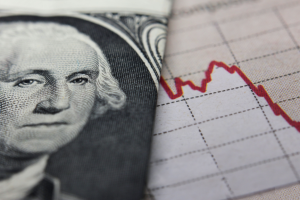
You’ll get no argument from me that GameStop (NYSE:GME) is one of the best meme stocks to sell. However, the video game retailer has been around a long time, suggesting it’s not the worst of the meme stocks to sell.
So who is?
QuiverQuant.com provides data on the top meme stocks in U.S. stock exchanges. One of its data points is the WallStreetBets score, based on the number of times a company is mentioned on the subreddit over the past week.
GameStop has a 95 rating out of 100, which is quite high. Eight others have scores higher than 95. Those would be good candidates for meme stocks to sell.
There are other stocks with lower scores that I would sell in a heartbeat, such as AMC Entertainment (NYSE:AMC), which clocks in at 94. I won’t select it because I’m tired of getting emails from AMC bulls complaining about my lack of objectivity. Crap is crap.
Anyway, this list of top meme stocks includes some names worth owning. I’ll save these for another time.
ImmunityBio (IBRX)

ImmunityBio (NASDAQ:IBRX) has a WallStreetBets score of 97, which means it gets a lot of chatter. I’ve never heard of it, but it has a $6.1 billion market capitalization.
“ImmunityBio is a vertically integrated biotechnology company developing next-generation therapies and vaccines that bolster the natural immune system to defeat cancers and infectious diseases,” states the company’s investor relations site,” the company’s investor relations site states.
Dr. Patrick Soon-Shiong founded ImmunityBio in 2014. He is the Executive Chairman and owns nearly 83% of the company through various affiliated businesses. According to the Bloomberg Billionaires Index, he’s worth $12.6 billion, up $2.1 billion in 2024.
If he’s as good at running a biotech firm as a newspaper — he bought the Los Angeles Times in 2018 for $500 million — you don’t want anything to do with ImmunityBio.
One benefit of owning the largest paper on the West Coast is that it gets to announce ImmunityBio news. On April 22, the FDA (Food and Drug Administration) approved Antika, the company’s treatment for bladder cancer. As a result, Antika’s shares are up 70% over the past month.
While good news, it will have to sell a lot of Antika to eliminate the nearly $3 billion accumulated deficit on its balance sheet.
MicroStrategy (MSTR)

MicroStrategy (NASDAQ:MSTR) has a WallStreetBets score of 96.
There was a time when I thought Chairman and co-founder Michael Saylor’s strategy of buying Bitcoin (BTC-USD) for his data analytics software business’s balance sheet wasn’t a terrible idea.
When Saylor started buying BTC in August 2020, the Federal Reserve’s Federal Funds Effective Rate, or FRED, was 0.10%. Today, it’s 5.33%. With cash balances delivering negligible income, it couldn’t hurt to put excess cash into an appreciating asset. Bitcoin at the time was $11,670. Today, it’s over $58,000.
The company reported its Q1 2024 results on April 29. They missed on both the top and bottom lines. Its shares fell nearly 10% on the news.
In February, I argued that MicroStrategy wasn’t a good data analytics stock because Bitcoin obscured its operating business, which isn’t a high-growth enterprise. Its software-related revenue fell 5.5% in the first quarter to $115.2 million.
The problem is that it went from an operating loss of $20.3 million in Q1 2023 to a $203.7 million loss in the latest quarter. This was because of Bitcoin losses in the three months ended March 31, 2024.
Unlike Berkshire Hathaway (NYSE:BRK-B), which provides investors with a lower-risk way of owning Apple (NASDAQ:AAPL), MicroStrategy does not do the same for Bitcoin.
If you want to own the cryptocurrency, buy it directly or purchase one of the many Bitcoin trusts.
Rumble (RUM)

Rumble (NASDAQ:RMBL) has a WallStreetBets score of 63, well below GameStop’s 95 score. I picked Rumble because it’s another example of misguided loyalty to all things Donald Trump.
The good news if you bought RUM stock at the beginning of the year is that you’re up more than 55% year-to-date. The bad news is this is about as good as it will get. The stock got as high as $18.52 in February 2022. It remains well down from its 2022 highs despite this year’s gains.
The gains in 2024 are two-fold: First, the same people gobbling up Trump Media & Technology Group (NASDAQ:DJT) stock also buy Rumble because of its video partnership with Truth Social, TMTG’s social media platform. Secondly, it signed a partnership with Barstool Sports that puts all of Barstool Sports’ content on the Rumble platform.
“I’m excited about Rumble’s commitment to sports and broadening audiences,” said Dave Portnoy, Founder of Barstool Sports. “With the power of Barstool Sports, we are going to help Rumble be the top player in the video, cloud, and livestreaming space.”
It all sounds terrific. Unfortunately, it doesn’t pay the bills.
In 2023, Rumble generated $81 million, which is a heck of a lot more than Trump Media, but it was flat quarter to quarter while losing nearly $136 million in the past year, or $1.68 per dollar of sales, up from 91 cents per dollar of sales in 2022.
Don’t waste your money.
On the date of publication, Will Ashworth did not have (either directly or indirectly) any positions in the securities mentioned in this article. The opinions expressed in this article are those of the writer, subject to the InvestorPlace.com Publishing Guidelines.






